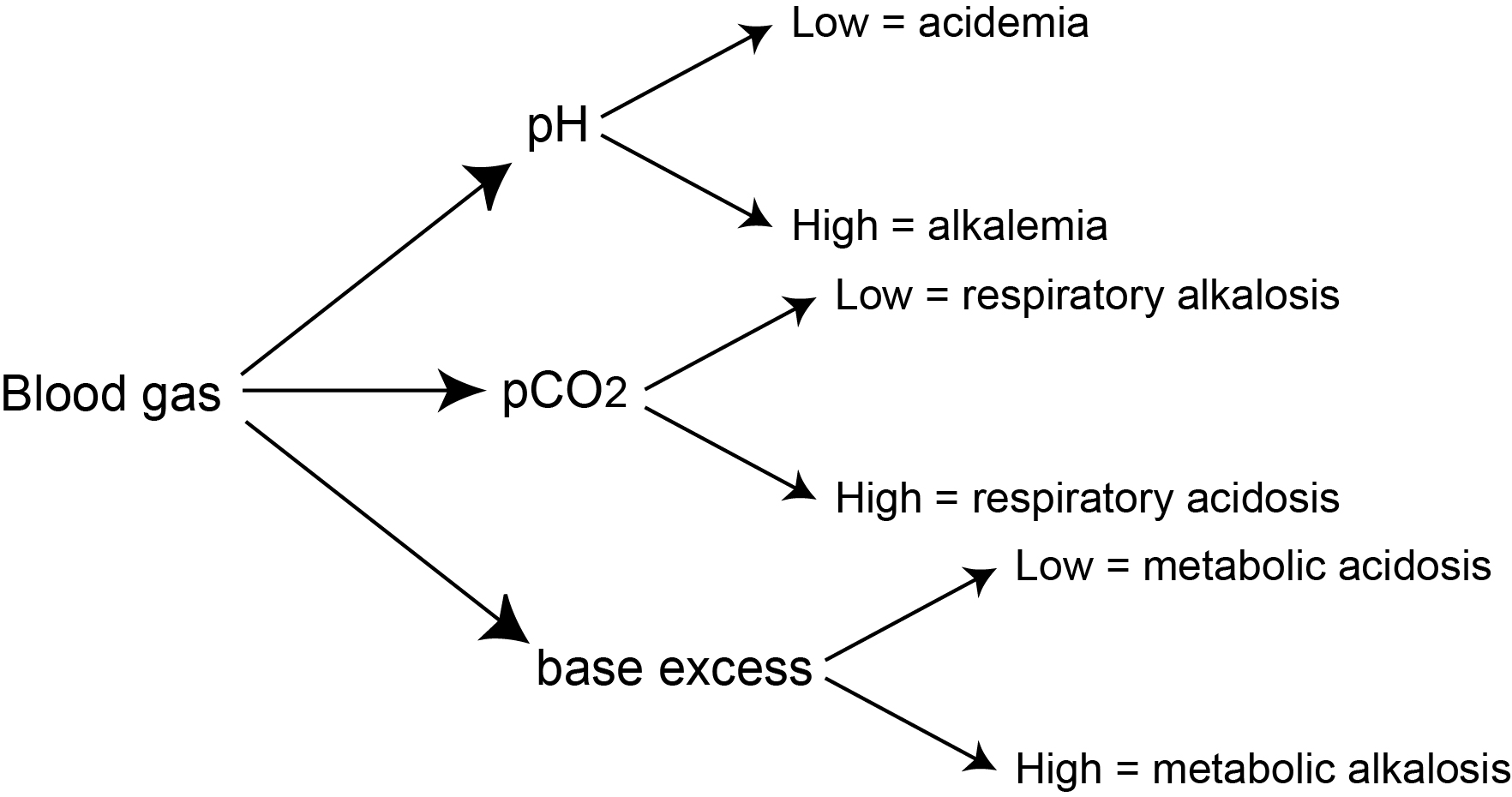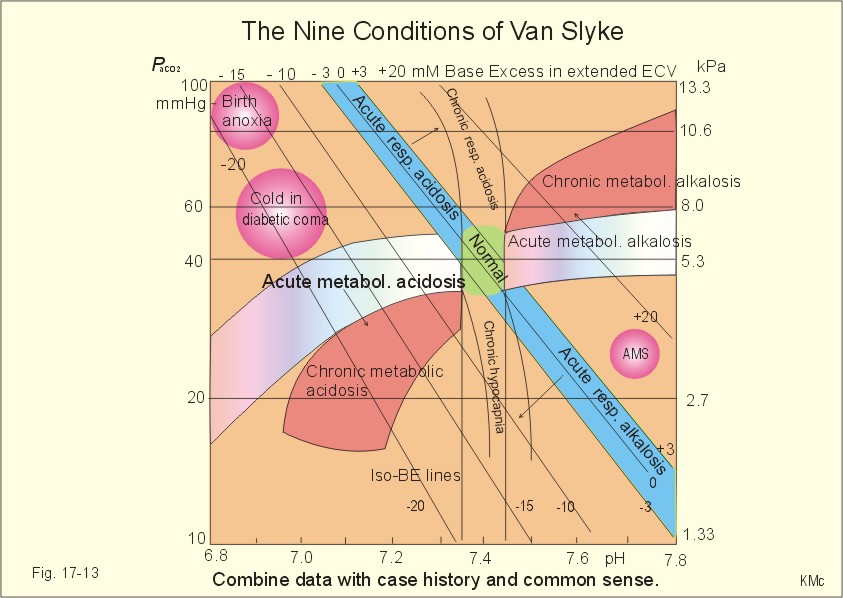Base Excess
Base excess (BE), German referred to as base excess or base excess or base deficit is a calculated parameter that is determined from a blood gas analysis and provides information about metabolic (metabolic ) disturbances of the acid - base balance. In simple terms, it represents the amounts of acids or bases, which are necessary to revert to an altered pH of the body back to its normal values . Concept and principle were introduced in 1958 by Astrup and Siggaard - Andersen.
The base excess indicates the deviation from the reference range of the total buffer bases in the extracellular space as BE ( ecf ), in the blood as BE (B). This is ( laboratory differently depending ) at about 48 mmol / l The normal values for the BE, depending on the laboratory at 0 ± 2 mmol / l or ± 3 mmol / l
In the clinic, the base excess is suitable for the evaluation of non- breathable conditional shares at a disturbance in the acid -base balance.
Based on the base deviation can be estimated for the symptomatic treatment of metabolic acidosis, the need for NaHCO3:
Example: A 75 kg patient with a negative base excess of -8 mmol / l so has an approximate deficit of 200 mmol









